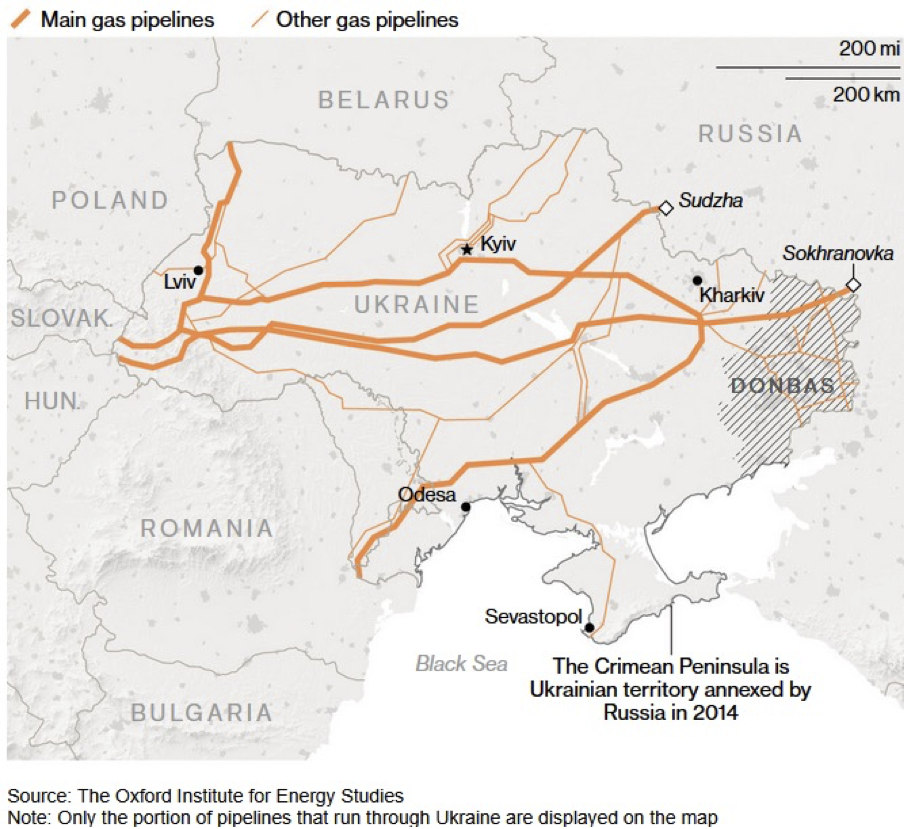Bloomberg reports shelling of Russian compressor station in Kursk region, TTF price rise of 2.7%.
According to reports from Bloomberg, the Russian compressor station (Kursk region), which enables the transport of natural gas to Ukraine via the Sudzah metering station (see map below), was damaged by attacks. As a result, prices on the TTF rose by 2.7% to €43.99/MWh in the early morning.

As no natural gas is currently being transited through Ukraine to the EU - meaning that this damage should not actually have any impact on the supply of natural gas in the EU - this price increase can also be interpreted to mean that some natural gas traders were hoping for an early resumption of gas transit through Ukraine. With this in mind, these traders will be able to see the damage in order to realistically assess the situation. Even if one were to assume - given a relatively favourable damage picture - that transit would be resumed, it should be borne in mind - as already outlined in a recent article published here - that a great deal of negotiation work would still be required and this would take time - especially as there are currently no indicators of interest in a ceasefire on the part of President Putin. Putin seems to be playing for time. Contract details such as quantities, routes, prices etc. would have to be negotiated. The condition of the relevant natural gas transit infrastructure in Ukraine would also have to be checked beforehand and who would pay for any necessary repairs. In addition, the right companies/partners would have to be found as many of the former European buyers are involved in arbitration proceedings with Gazprom. If one assigns the necessary process steps to the respective time required to clarify the same, it becomes clear that Russian gas - transported through Ukraine - would not be available in time for the storage refilling phase in 2025.
It would seem to make more sense to officially relax the strict filling levels for the gas storage facilities for the gas year 2025 - as demanded by Germany and France. Alternatively, the market could also be indirectly signalled that the filling levels will deliberately not be adhered to either to the extent and or at the planned times - especially as the EC has indicated that any violations would be treated leniently. It would also be conceivable - to a certain extent - to minimise storage withdrawal in the months of January, February and March 2026 by importing significantly more in these months compared to the same months in 2025. This is against the background that a relatively large amount of LNG liquefaction capacity will come online in the course of 2025 (mainly Q3+Q4), meaning that the necessary imports could be managed from a more liquid LNG market.
